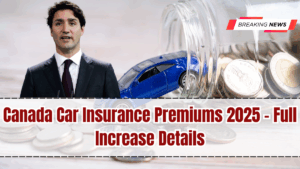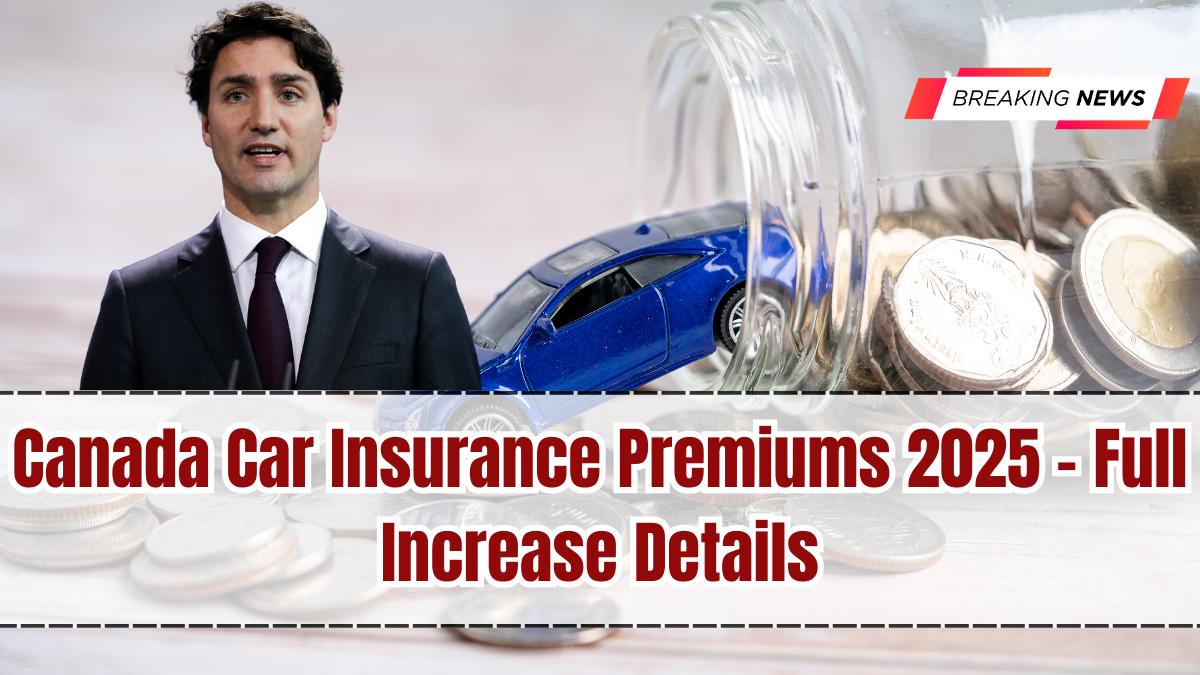Car insurance has always been one of the most significant expenses for Canadian drivers, and in 2025 the cost is climbing higher across the country. Provinces such as Ontario, British Columbia, and Alberta are witnessing some of the steepest increases in years. This rise in premiums is being driven by a combination of inflation, repair costs, claims frequency, and stricter provincial regulations. For households already dealing with higher fuel prices, maintenance expenses, and general cost of living increases, the additional burden of higher auto insurance rates is a serious concern.

Why Are Car Insurance Premiums Rising in 2025?
The rise in Canada Car Insurance 2025 premiums is influenced by multiple factors. Inflation has made vehicle parts and repair services more expensive. A surge in new vehicle technology, including sensors, cameras, and onboard computers, has raised the average repair bill significantly. Even minor collisions now require specialized repairs that cost thousands of dollars.
Additionally, weather-related damages have increased insurance claims. Provinces like BC have faced severe flooding and wildfires, while Ontario and Alberta continue to experience harsh winters that lead to frequent accidents. The higher risk environment directly pushes premiums up for all policyholders, even those with clean records.
Provincial Breakdown of Premium Increases
Insurance in Canada is regulated at the provincial level, which means the impact of Canada Car Insurance 2025 varies across regions.
-
Ontario remains the most expensive province for auto insurance. Average premiums are expected to rise by 7–10% in 2025, pushing many drivers to pay over $2,000 annually.
-
British Columbia (BC), under its public insurance system, is seeing a 5–7% increase in premiums. ICBC has attributed this to higher claim settlements and legal costs.
-
Alberta drivers will also feel the pinch, with premiums climbing by 6–9%, particularly for younger drivers and those in urban centers like Calgary and Edmonton.
Across all provinces, the trend is consistent: drivers are paying more regardless of driving history, though safe drivers may still access small discounts through usage-based programs.
Insurance Companies and Rate Justifications
Insurers argue that the increases under Canada Car Insurance 2025 are justified by the financial realities they face. Rising medical treatment costs for accident victims, higher repair bills, and increased fraudulent claims all contribute to the problem. Insurance companies have also noted that the return to normal traffic levels after the pandemic has led to more collisions and therefore more claims.
Regulatory boards in Ontario and Alberta reviewed several applications from insurers requesting rate hikes, and most were approved after careful analysis. In BC, ICBC announced publicly that higher rates were unavoidable due to system-wide pressures.
Impact on Drivers’ Budgets
For the average Canadian family, the increase in premiums is coming at a time when budgets are already stretched thin. Housing, food, and transportation costs are at all-time highs. Adding a Canada Car Insurance 2025 premium hike of several hundred dollars per year means many households must reallocate funds or cut back on other essentials.
For young drivers and those with prior convictions, premiums are rising even more steeply. Some reports show increases of over $500 annually for high-risk categories, making driving less affordable for many.
How to Save on Car Insurance in 2025
Despite the rising rates, there are still strategies drivers can use to manage costs:
-
Bundle policies: Combining home and auto insurance with the same provider can lead to discounts.
-
Usage-based insurance: Programs that monitor driving habits may lower premiums for safe drivers.
-
Increase deductibles: Choosing a higher deductible can reduce monthly premiums, though it raises out-of-pocket costs in case of an accident.
-
Compare providers: Shopping around annually remains one of the best ways to find lower rates.
-
Maintain a clean record: Avoiding tickets and accidents remains the most effective way to control long-term costs.
By taking advantage of these measures, some drivers may be able to offset part of the Canada Car Insurance 2025 increases.
Industry Outlook
Experts predict that premiums will continue to rise through the next few years, though the pace may slow after 2025. Advances in electric vehicles and autonomous driving may reduce accident rates, but until adoption is widespread, insurers must cover high repair costs and frequent claims. Climate change-related events are also expected to keep insurance payouts high, adding further pressure.
While governments are reviewing regulations to make premiums fairer, especially in Ontario, no immediate relief is expected. Drivers must prepare to adjust budgets accordingly.
Public Reaction
The reaction to Canada Car Insurance 2025 has been largely negative among consumers. Advocacy groups are calling for greater transparency from insurers, while politicians face pressure to introduce reforms. Some drivers feel that despite driving safely, they are unfairly penalized by system-wide issues like fraud and weather damage. Others argue that public systems, such as in BC, are not protecting drivers enough from rising costs.
The debate continues, but one fact remains clear: car insurance is becoming more expensive, and drivers must adapt to the new reality.
FAQs
How much will car insurance increase in Ontario in 2025?
Ontario drivers can expect premiums to rise by about 7–10%, with average annual costs exceeding $2,000.
What are the new rates in British Columbia in 2025?
BC drivers will see premiums rise between 5–7% under ICBC’s adjustments.
Why are car insurance rates going up in Alberta?
Alberta’s increases of 6–9% are due to higher claims, inflation, and regulatory approvals for insurer rate hikes.
Can drivers reduce their insurance costs in 2025?
Yes, by bundling policies, raising deductibles, and enrolling in usage-based programs, drivers can reduce their expenses.
Will car insurance continue to rise after 2025?
Experts suggest rates will keep rising, though potentially at a slower pace, due to high repair costs and climate-related risks.
Click here to know more.
